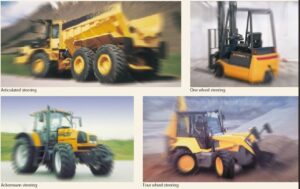
Fluid power systems are used in mobile applications to perform several operations, from load handling and hydraulic equipment control, to the translation and steering control of the vehicle. Hydrostatic steering is a hydraulic steering system that does not require mechanical steering linkage. In place of mechanical linkage, a steering unit and steering cylinders along with hydraulic hoses are used. This steering unit is used in industrial vehicles, agricultural tractors, marine ships, constructional equipment and servo-type systems where directional steering is needed.
There are different types of steering systems used in agricultural tractors, forklifts and construction machinery. For example, in tractors Ackermann Steering is used where the geometric configuration that allows both front wheels to be steered at the appropriate angle to avoid tyre sliding. It was invented by the German carriage builder Georg Lankensperger in Munich in 1817, then patented by his agent in England, Rudolph Ackermann in 1818 for horse-drawn carriages.

In the development process of tractor steering systems, starting from the 1910s, it was completely mechanical driven steering systems, in the 1950s and 60s hydraulic assisted steering systems and today hydrostatic driven steering systems are used.
These systems have no mechanical connection between steering column and the wheels. There are hydraulic hoses between steering unit (orbitrol) and steering cylinders. When the steering wheel is turned, steering unit provides oil flow to steering cylinder ends. At the same time, oil returns to tank from other end of cylinder. In open center systems, a fixed displacement pump provides flow to the orbitrol.
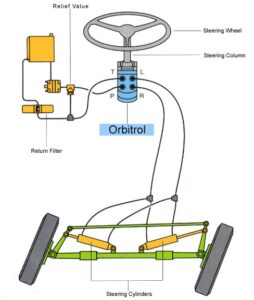
Basically there are four ports on the steering unit for oil flow. Pump port, tank port and two cylinder ports in order to rotate wheels left and right.
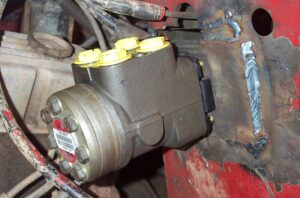
The steering unit consists of a rotary valve and a rotary meter. When the steering wheel is turned, oil is directed from the steering system pump via the rotary valve (spool and sleeve) and rotary meter (gear wheel set) to the cylinder ports L or R, depending on the direction of turn. The rotary meter meters the oil flow to the steering cylinder in proportion to the angular rotation of the steering wheel.
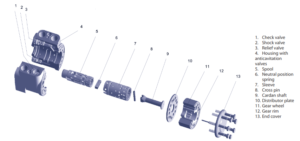
Different steering units are available with open/closed center circuits, load and non load reaction functions. Some of the models have integrated pressure relief valves and anti-shock valves. Load sensing models can provide flow to steering system and hydraulic system of the vehicle. Priority valves are used on these models to make sure steering has always priority. Let’s take a look what do these functions mean:
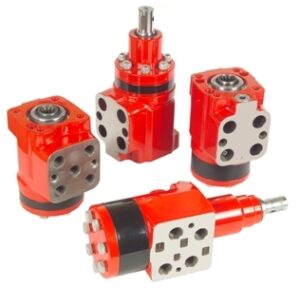
Today there are various type of steering units are used with displacement up to 1000 cc/rev and flow rate up to 100 liter/min. For large vehicles, combine harvesters or loaders electrically actuated steering systems are also available.
Pictures are used for educational purposes.
Sources: